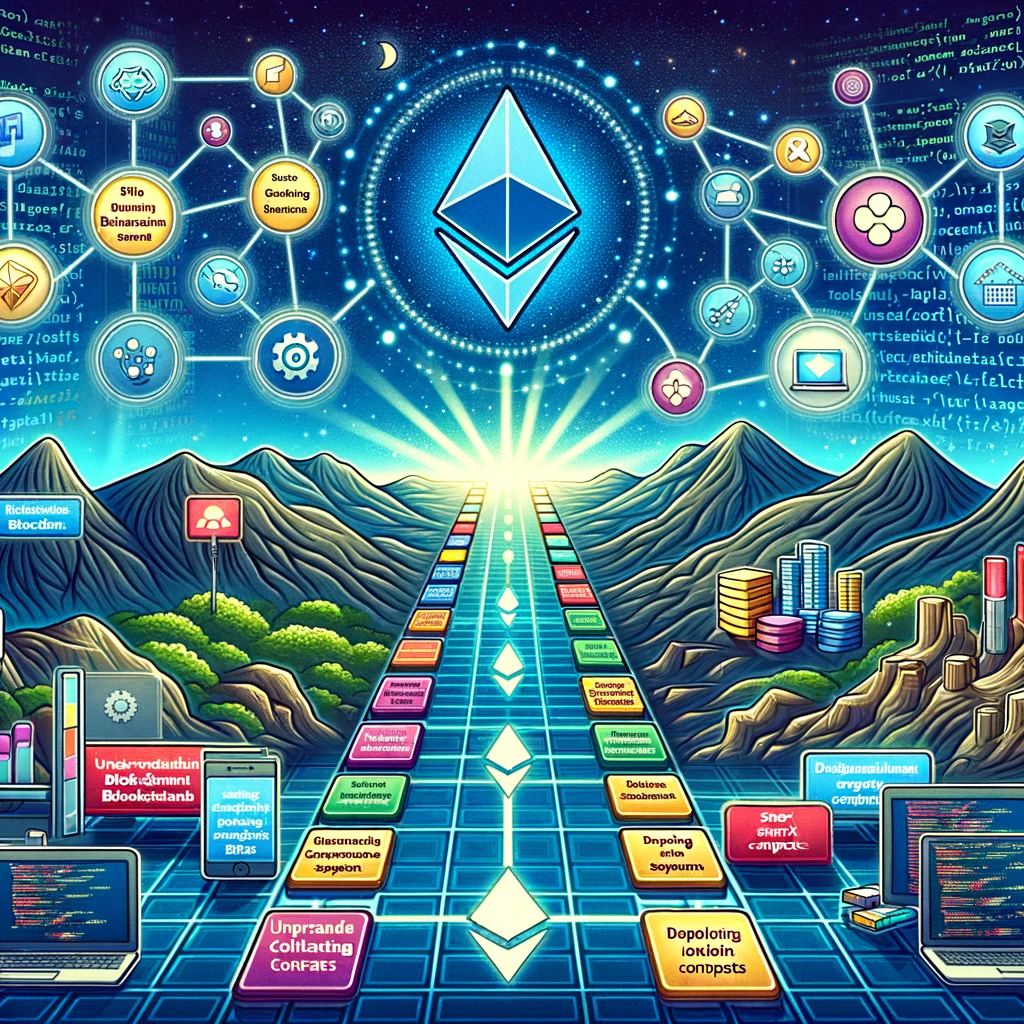A Beginner’s Guide to Solidity: Your First Steps in Smart Contract Development
Introduction Welcome to the world of blockchain and smart contracts! If you’re venturing into the realm of Ethereum-based applications, Solidity is your gateway. Solidity is a programming language designed for developing smart contracts that run on the Ethereum Virtual Machine (EVM). This blog aims to introduce beginners to the basics of Solidity and guide them through their initial steps. Figure 1 & 2 visualizes the educational journey of a beginner in Solidity programming. It features a pathway marked with crucial milestones like ‘Basic Concepts’, ‘Environment Setup’, and ‘First Smart Contract’. Along this digital and blockchain-themed path are signposts and icons representing fundamental Solidity elements such as contracts, functions, and variables. The journey culminates towards a luminous Ethereum logo, symbolizing the ultimate goal of mastering Solidity and excelling in Ethereum blockchain development.


Understanding Solidity Solidity is a statically-typed programming language, influenced by C++, Python, and JavaScript. It’s used to write smart contracts — self-executing contracts with the terms of the agreement between buyer and seller directly written into code.
Why Learn Solidity?
- High Demand: With the growing interest in decentralized applications (DApps), Solidity developers are in high demand.
- Innovative Field: Blockchain technology is at the forefront of innovation, offering a plethora of opportunities to explore.
- Financial Applications: Solidity is crucial for developing decentralized finance (DeFi) applications, a rapidly expanding sector.
Starting with Solidity
- Familiarize with Basic Concepts: Understand the basics of blockchain and how Ethereum works.
- Environment Setup: Install necessary tools like Node.js, Truffle Suite, and an Ethereum wallet like MetaMask.
- Write Your First Smart Contract: Start with a simple contract, such as a “Hello World” program.
Key Concepts in Solidity
- Contracts: The fundamental building blocks of applications in Solidity.
- Functions: Define what your contracts can do.
- Variables: Store and manage data on the blockchain.
- Inheritance: Allows you to create new contracts from existing ones.
Best Practices
- Start Small: Begin with simple projects and gradually increase complexity.
- Follow Security Practices: Smart contracts handle real value and are immutable once deployed, making security paramount.
- Engage with the Community: The Solidity community is active and supportive; forums and social media groups can be invaluable resources.
Resources for Learning
- Official Solidity Documentation: A comprehensive resource for learning Solidity.
- Online Tutorials and Courses: Platforms like Udemy, Coursera, and YouTube offer beginner to advanced level courses.
- Practice: Use platforms like Remix, an online IDE for Solidity, to practice writing and deploying contracts.
Conclusion Solidity opens the door to a new world of blockchain-based applications. As a beginner, the key is to start with the basics, understand the core principles, and gradually move to more complex projects. Remember, every expert was once a beginner, so embrace the learning process and enjoy your journey into the exciting world of smart contracts.